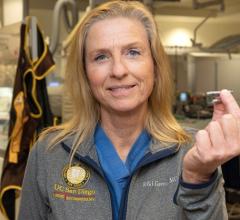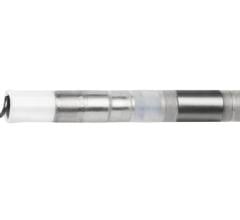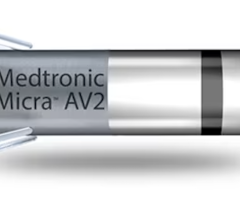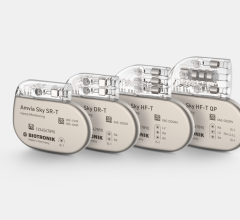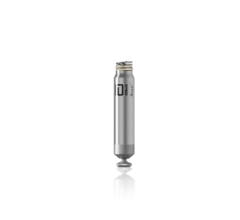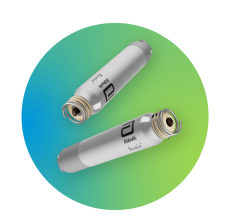October 8, 2008 - St. Jude Medical Inc. today celebrates the 50th anniversary of the world’s first implantable pacemaker.
Oct. 8, 1958, a Swedish man named Arne Larsson received the world’s first implanted pacemaker. The groundbreaking technology for the implantable cardiac pacemaker was developed by Rune Elmqvist, M.D., of the Swedish company Elema Schönander, which eventually became part of St. Jude Medical.
Larsson suffered from a life-threatening heart condition and in the autumn of 1958, when he was 43, his condition became critical. His heartbeat reduced to 20 beats per minute (a healthy heart beats 60-100 times per minute) and he was afflicted by frequent fainting spells, called Stokes-Adams syndrome. His condition was so life-threatening that his wife urged his physician, in a last attempt to save his life, to expedite the process of implanting the first pacemaker. The pacemaker was surgically implanted by Åke Senning, M.D., at the Karolinska Hospital’s Heart Clinic in Stockholm.
The initial pacemaker implanted in Larsson was damaged during the operation and stopped functioning after the first night. A second identical pacemaker was surgically implanted the next day. Larsson’s life was saved, and due to the continuation of medical technology development, he lived a full and active life, using a total of 22 pacemakers during his lifetime. In 2001, he passed away at the age of 86 due to an illness unrelated to cardiac health. He outlived both the inventor and the implanting physician of the first implanted pacemaker.
The first implantable pacemaker was about the size of a hockey puck and had just two transistors. Today’s pacemakers, which can last up to 20 years, can be as small as a half-dollar yet contain sophisticated computer technology with as many as 20 million transistors. However, today’s pacemakers are still based on the same underlying principles as the original device, invented by Dr. Elmqvist 50 years ago.
“The remarkable story of Arne Larsson and the first implantable pacemaker is a poignant reminder of how much has been accomplished in the past 50 years,” said Daniel J. Starks, chairman, president and chief executive officer of St. Jude Medical. “This milestone invention was the foundation for understanding the electrical functions of the heart, eventually saving millions of lives worldwide. Advancements in cardiac electrophysiology – which now include implanted defibrillators that protect against sudden cardiac death, and ablation therapies that stop abnormal heart rhythms – all began with the first pacing technologies.”
Modern pacemakers have many technological advancements. Today, St. Jude Medical pacemakers offer numerous advanced features, including automatically self-adjusting the energy output required to pace the heart per the needs of each individual patient to optimize battery life. Newer pacemakers also actively monitor the heart on a beat-by-beat basis to provide pacing only when needed, allowing the patient’s own heart rhythm to prevail whenever possible; studies have shown this is beneficial to patients’ cardiac health. They also allow physicians to quickly program the device’s timing cycles to deliver optimal therapy to patients. St, Jude has developed the QuickOpt Timing Cycle Optimization, which takes about 90 seconds, while the traditional means of optimizing the device using echocardiography takes between 30 and 120 minutes.
Cardiac pacemakers treat bradycardia, a heart rate that is too slow. These devices monitor the heart and provide electrical stimulation when the heart beats too slowly for each patient’s specific physiological requirements. Newer pacemakers also provide diagnostic information to physicians, and treat heart failure by resynchronizing the electrical impulses in the heart’s four chambers and improving its ability to pump blood to the body.
The 50th anniversary of the implantable pacemaker was celebrated today with an event at the Swedish office of St. Jude Medical, where a newly created scholarship was presented to promote important future medical technology innovations. At the event, Göran Hägglund. the Swedish minister for health and social affairs, spoke regarding Swedish medical care and research, and a panel including Harriet Wallberg-Henriksson and Peter Gudmundsson, presidents at Karolinska Institute and KTH (Royal Institute of Technology), respectively, discussed the outlook for Sweden’s role as a successful country within the medical technology field.
The anniversary also is being celebrated at the American Swedish Institute in Minneapolis with an exhibit, A Heartfelt Swedish Invention at 50 Years: The Implantable Pacemaker. The exhibit will be open to the public through Oct. 26. The exhibit features hands-on displays of medical equipment – including a model of the first pacemaker – as well as video, photographs, stories and a historical timeline of cardiac pacing.
For more information: www.sjm.com


 May 02, 2025
May 02, 2025 
